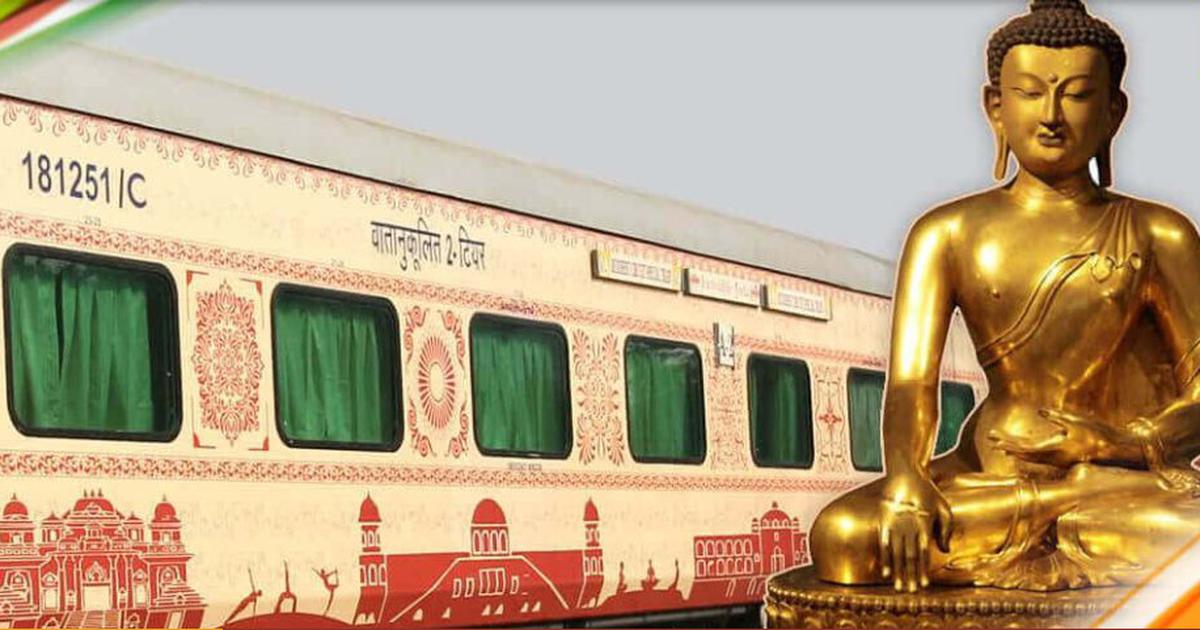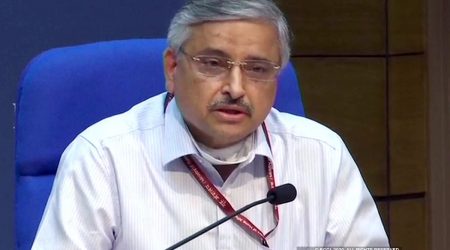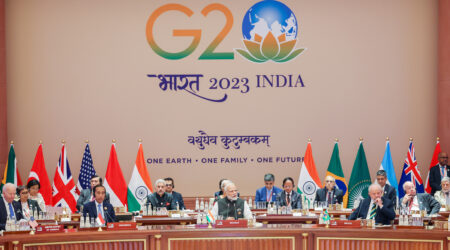With efforts to bolster regional multilateral engagements in the face of rising Chinese authoritarianism, strengthening age-old cultural bonds between India and nearly half a billion Buddhists will play a critical role in enhancing people-to-people contact between those espousing liberal values.
PM Modi’s Act East Policy (AEP) – framed in a pre-Covid era and aimed at creating economic, strategic and cultural collaboration between India and the ASEAN bloc – is getting a second look against the backdrop of evolving global geopolitics. This involves reimagining the “Buddhist Circuit” – a travel route in the footsteps of Lord Buddha – as not simply a feature that complements the AEP but also as a segue into defining India as a primary destination and cultural homeland for Buddhists across the globe.
In his footsteps
In October last year, the Indian Railways ran its inaugural Buddhist Circuit train over eight days, connecting the city of Lord Buddha’s birth (Lumbini in Nepal), to over a dozen sites of importance including the place where he achieved enlightenment (Bodh Gaya), gave his first sermon (Sarnath, near Varanasi), and attained Nirvana (Kushinagar). The journey was interspersed with stops at key seats of learning like Nalanda and Rajgir, which, many centuries ago, had hosted students and scholars from as far as Korea and Japan. Last month, the union government announced construction of an international airport in Kushinagar which would enable pilgrims and tourists to gain easy access to the historic cities of Sravasti and Kapilvastu where Lord Buddha spent much of his monastic life.

India’s investment in developing and connecting the country’s centers of Buddhist heritage has the potential to bring large parts of Southeast and East Asia within its pluralistic cultural embrace.
The Buddhist Circuit
With Kushinagar in Uttar Pradesh acting as a central node of the circuit, holistic development of the area would involve creating a hospitality ecosystem, improving connectivity and engaging local businesses. Large hotel chains like the Oberoi Group, Cygnett and Holiday Inn’s IHG are building their presence across the region over the next two years, taking note of the low input costs and expected growth in tourist footfall. Addressing issues related to land acquisition, the state has pooled together 200 acres which private hospitality groups can utilize for setting up hotels and lodges. The government’s nearly $1.5 billion investment in Buddhist Circuit-specific infrastructure projects has reduced travel time between pilgrimage sites by 20-30 per cent, trimming costs and extending the scope for tour operators. Additionally, if the Delhi-Varanasi high-speed rail corridor project report is approved, the coming years could see the journey time between the two cities cut to just four and half hours from the current eight hours.
Human capital development has also been in focus, as skilled local labor will underpin the quality and success of the circuit. Last month, Kushinagar emerged as the most improved district in the education category, while Varanasi saw the best overall development, according to India Today’s “State of the State 2020” rankings. As the country plays host to both domestic and foreign tourists, efforts are on to provide seamless connectivity and high-quality hospitality services, and there appears little dearth in overseas funding to support this plan with both Japan and the World Bank keen to invest.

Reimagining the “Buddhist Circuit” – a travel route in the footsteps of Lord Buddha – segues into defining India as a primary destination and cultural homeland for Buddhists across the globe.
Regional hubs
With much of the Buddhist heritage in Pakistan, Afghanistan and China being erased, the westernmost bastion of Buddhism is now the high-altitude region of Ladakh which recently gained the status of a Union Territory through the bifurcation of Jammu & Kashmir. Home to a plethora of monasteries, Ladakh offers visitors a window into Tibetan culture due to its historic linkages with Lhasa. In many ways, it shares similarities with parts of Himachal Pradesh, Sikkim and Arunachal Pradesh. The government has taken cognizance of this, and the Buddhist Circuit has been extended to regional hubs.
Despite the UDAN low-cost subsidized airline scheme in the Northeast having muted success, the central leadership appears keen to run the program especially in border states, with an eye on China. Connectivity issues have plagued the Northeast for long, but integration of new yet remote regions into the wider Buddhist Circuit has meant that the center has had to take corrective actions on previous plans which encountered obstacles. For example, Sikkim’s sole airport, Pakyong, closed soon after its opening in 2019 due to technical issues, but should be ready for passenger traffic this year after the airstrip was widened and additional land acquired for installing landing equipment to ensure all-weather operability. Meanwhile, the monastery-dotted scenic Spiti Valley in the Lahaul-Spiti district has long suffered from poor wintertime connectivity with the rest of the state of Himachal Pradesh, but with the Border Roads Organization speeding up construction of the strategic Rohtang Tunnel, it would become accessible year-round starting this September. Looking east, transforming India’s frontier states into true gateways for collaboration with its neighbors would involve hastening the progress of the AEP’s trilateral highway project connecting Manipur to Thailand via Myanmar. Besides facilitating tourist access to the Buddhist circuit, it stands to improve bilateral trade and act as a strategic counterbalance to China’s Belt and Road Initiative (BRI).

Reimagining the “Buddhist Circuit” – a travel route in the footsteps of Lord Buddha – segues into defining India as a primary destination and cultural homeland for Buddhists across the globe.
Bringing together ideas
People-to-people contact is not limited to just pilgrimages and tourism, and in this context, PM Modi’s push last week for setting up a Central University in Ladakh with a Centre for Buddhist Studies is noteworthy. Leveraging local knowledge to reinvigorate academic study and debate has potentially far reaching effects, especially considering that one of the AEP’s stated objectives is to provide scholarships and educational opportunities to students from the ASEAN region. Furthermore, with the continuation of the Dalai Lama lineage having been put under question by His Holiness himself, it becomes all the more imperative that both the Buddhist traditions and political message of the Tibetan people are communicated and discussed with thought leaders in the neighborhood. Taking this theme forward, strengthening the place of India’s largest monastery, Tawang’s Gaden Namgyal Lhatse, in the Buddhist Circuit will give the opportunity for cultural exchange while simultaneously providing the world an insight into the rich heritage of Arunachal Pradesh – a region that Chinese Communist Party claims as “South Tibet”.
The value of developing the Buddhist Circuit is not only in the fillip it gives to local MSMEs and the broader tourism industry, but also in the revival of two thousand years of international interaction and confluence of ideas, centered in India. Moreover, in the context of the nation taking a leadership role in modern international relations and diplomacy, the Buddhist Circuit will become a pillar of strength and a symbol of unity for India and the ASEAN region in the years to come.

Reimagining the “Buddhist Circuit” – a travel route in the footsteps of Lord Buddha – segues into defining India as a primary destination and cultural homeland for Buddhists across the globe.
Source: India Global Business












